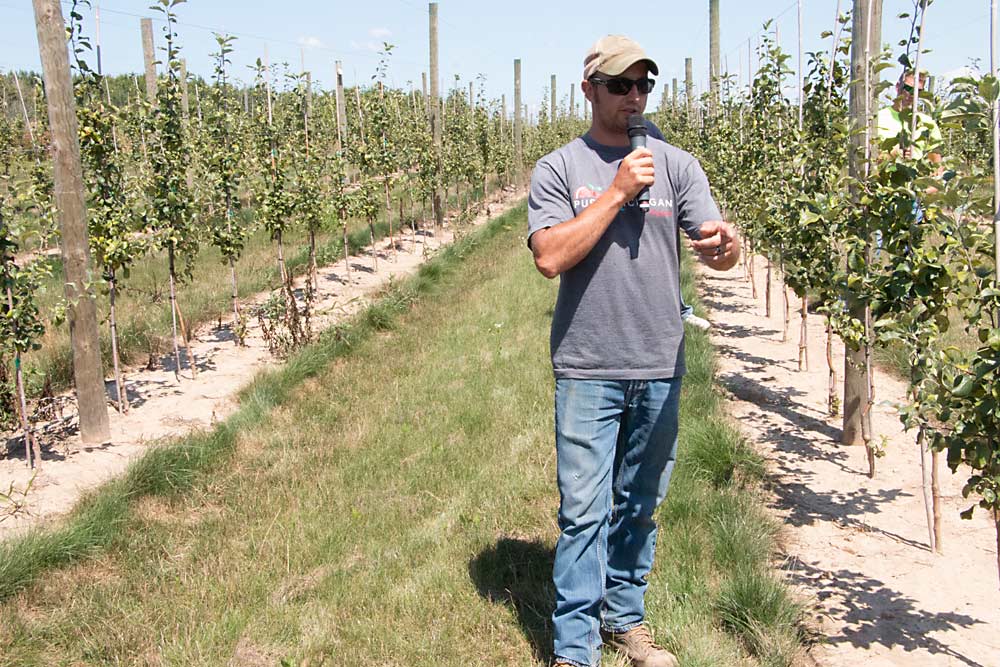
Michigan Pomesters hosted RidgeFest, its annual summer fruit tour, on Aug. 6. Members of the fruit group visited three orchards, and drove through a few more in their vehicles, to study innovative growing and training systems in Western Michigan’s Fruit Ridge, the state’s biggest apple-growing region.
The first stop was Kober Fruit, where grower Randy Kober walked the group through a block of Honeycrisp on Nic.29 rootstock. The bench-grafted trees were planted in-place in 2018 in virgin soil where beans were the previous crop. Kober cut the scions off regular Honeycrisp trees from a different block. They put up the trellis and poles right after planting the trees.
“You have to have something to train that tree from the ground up if you do this,” he said. “You have to be able to fasten it.”
It’s still too early to say if the plant-in-place method will be cost-effective for Kober. He’s waiting to see how the block turns out before trying the same method again. Some of the bench grafts didn’t take and required chip budding, which slowed down growth in those trees, he said.
Kober didn’t irrigate the block. The summer of 2018 was very dry, and irrigation and fertilization probably would have pushed the trees more that year, he said. He fertilized them with nitrogen in 2019 and 2020.
If he were to try plant-in-place again, Kober would probably look into finding a greenhouse to start the trees, so he would know what the take was before planting them in his ground. That would avoid the inconsistent tree sizes he ended up with.
“You get a big variation of trees doing a plant-in-place,” he said.
When the trees start hitting the top wire and he starts cropping them, Kober thinks the sizes will level out.
Breaking branches
The final stop was Bill Nyblad’s New Leaf Orchards, where he walked the tour through a block of Fujis on Nic.29, planted in 2018. Certain branches in the block had dead, brown leaves that looked like fire blight but were not. Nyblad and his crew deliberately broke them to slow down their growth.
He got the idea from his brother, Gunnar, who had been experimenting with hedge cutting and other techniques in a test plot. Nyblad started refining the breaking technique.
The point is to slow down the branches’ strong growth before they start producing fruit spurs.
In spring of third leaf, Nyblad and his crew break the powerful, upright growing branches that need to be cut off either that year or the next. The branches will either survive the break and heal, at a flat branch angle, or slowly die, which will slow the regrowth behind the break — creating a smaller, calmer and more fruitful branch.
The perfect timing for breaking is first green tip, but the weather has to be warm enough for the branch to heal. The weather was too cold at green tip this year, so Nyblad waited longer than he would have preferred to start breaking. He said he and his crew successfully broke anywhere from 50 percent to 70 percent of the branches. Success depended on who was doing the breaking.
“You have to train your men well,” Nyblad said. “It’s a very technical break. If you break it too much, it will bend down too far. If you break it just right, you can tip down every limb that you don’t want to be vertical.”
—by Matt Milkovich






Leave A Comment